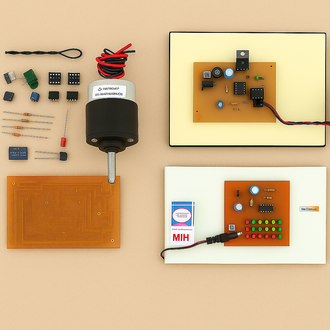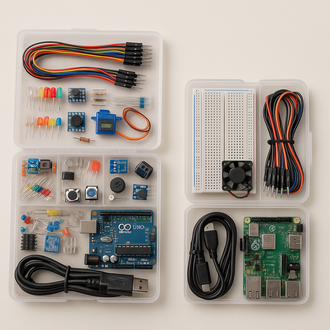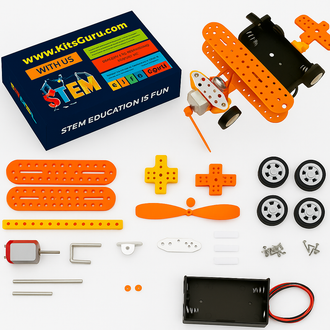
How The Latest Kits Are Shaping The Future Of DIY Projects
- 03 Feb, 2025
DIY culture is redefining hands-on projects through makerspaces, STEM education, and innovative home automation. This article explores how new DIY kits empower creatives to think beyond the obvious and build forward-looking projects.
The Evolution of DIY Kits
DIY kits have evolved from simple assembly models to sophisticated packages integrating robotics, IoT, and AI. They’re indispensable in:
- Education: Teaching science, technology, engineering, and mathematics through applied learning.
- Innovation: Providing a platform for prototyping and experimentation.
- Accessibility: Making advanced technologies understandable and implementable.
Key Features of Modern DIY Kits
Characteristics that define today’s cutting-edge kits:
| Feature | Benefit |
|---|---|
| Pre-packaged Components | Simplifies the building process. |
| Detailed Guides & Tutorials | Reduces the learning curve for beginners. |
| Modular Designs | Enables easy customisation and upgrades. |
| Software Compatibility | Facilitates coding and integration. |
| Affordable Pricing | Makes technology accessible to a broader audience. |
How DIY Kits Are Transforming Various Fields
1) Education in STEM
STEM-focused DIY kits redefine how students grasp complex concepts. Examples include:
- Arduino kits for programming and electronics.
- Robot kits to learn sensors, motors, and mechanisms.
- Renewable energy kits for solar and wind fundamentals.
2) Home Automation
IoT-based DIY kits help users make homes smart—no pro install needed:
- Automatic light controllers for remote/automated lighting.
- Energy monitoring systems to measure and optimise usage.
- Security systems for DIY surveillance and alerts.
3) Prototyping & Innovation
Inventors and hobbyists leverage DIY kits to:
- Create working prototypes quickly and affordably.
- Test cutting-edge ideas without large investments.
- Explore niche technologies (drones, advanced robotics, etc.).
Popular Categories of DIY Kits
Common kit types you’ll find at most electronics stores:
1) Robotics Kits
- Build functional robots.
- Learn mechanical structures, electronics, and programming.
2) IoT & Smart Home Kits
- Automation bundles with sensors, controllers, and wireless modules.
3) STEM Toys
- Designed for younger learners so education stays fun and interactive.
4) Renewable Energy Kits
- Explore sustainable tech: solar panels, wind turbines, water generators.
5) DIY Electronics Kits
- Soldering kits, PCBs, components for basic to advanced electronics.
Benefits of Modern DIY Kits
| Benefit | Description |
|---|---|
| Hands-On Learning | Encourages experiential, project-based learning. |
| Fosters Creativity | Provides a safe sandbox for innovation. |
| Encourages Collaboration | Promotes teamwork on group builds. |
| Accessible Technology | Brings complex tech to non-experts. |
| Budget-Friendly | Affordable entry into advanced fields. |
How DIY Kits Are Shaping the Future
1) Improving Access to Technology
The DIY project kit makes high-level technologies approachable for students, hobbyists, and professionals alike.
2) Driving Innovation
Prototyping tools enable innovators to:
- Create cost-effective solutions.
- Experiment with cutting-edge technologies.
3) Fostering Sustainability
Renewable energy kits and eco-friendly designs promote better practices in:
- Energy consumption.
- Waste management.
4) Empowerment through Education
DIY kits cultivate independent learning so students can:
- Solve real-world problems.
- Develop critical thinking.
DIY Kit Choosing Tips
Determine Your Skill Level
- Beginners: pick detailed, low-assembly kits.
- Advanced users: choose kits with programmable components.
Establish a Goal
- Select a kit aligned to your objective—learn IoT, build a robot, or prototype a device.
Check Compatibility
- Ensure components work with your existing hardware/software.
Read Reviews & Tutorials
- Understand usability, scope, and user experience before buying.
Conclusion
Modern DIY kits are gateways to creativity, learning, and innovation—from STEM education to smart homes. Whether you’re a student, hobbyist, or entrepreneur, there’s a kit ready to help you build what’s next. Explore, experiment, and create your masterpiece. For a wide range of options, check out KitsGuru—your partner in innovation.
















